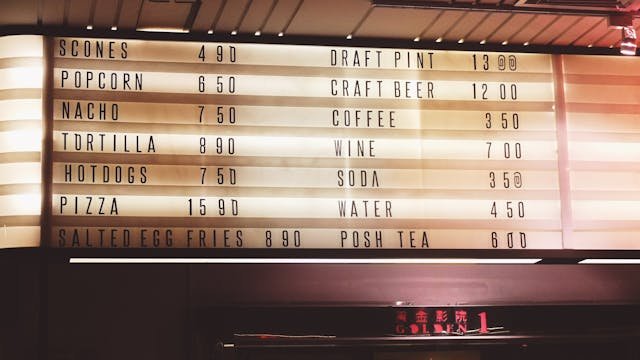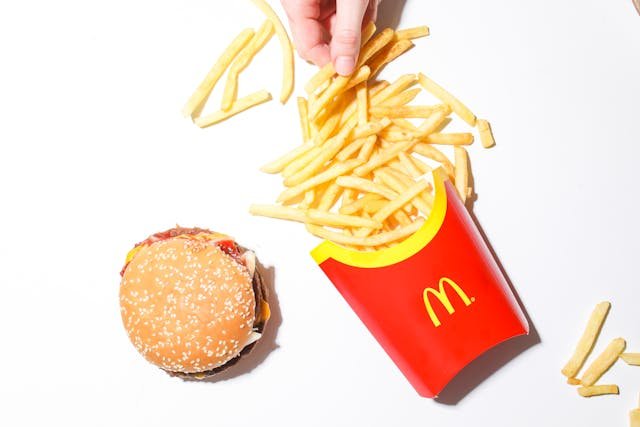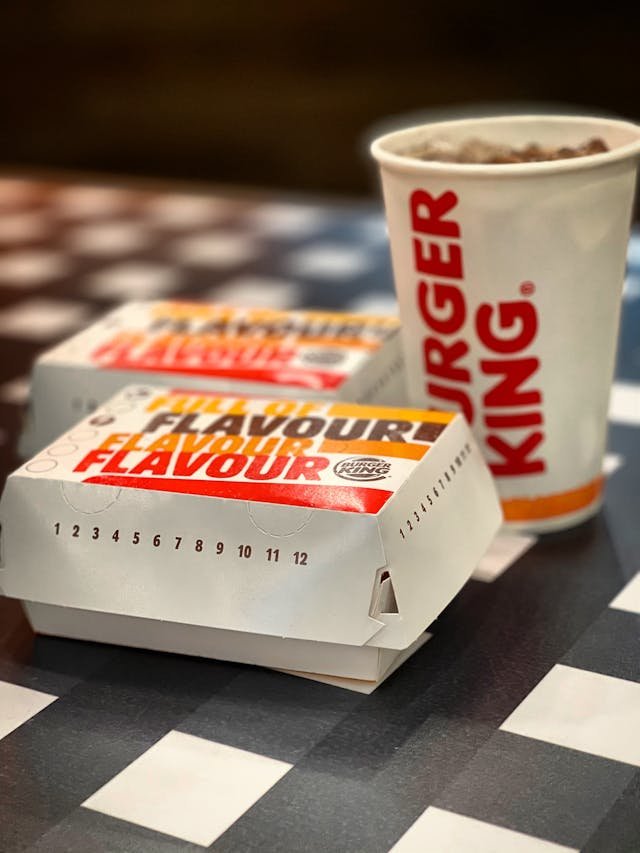The fast food industry is ever-evolving, responding to consumer demands, technological advancements, and cultural shifts. In this comprehensive article, we explore the top 15 global fast food trends shaping the market in 2024 and beyond, offering insights into what’s new and what’s next. Whether you’re a food enthusiast, a business owner, or simply curious, these trends will keep you informed and engaged.

Table of Contents
Toggle1. Plant-Based and Vegan Options Go Mainstream
The plant-based movement has gained incredible momentum to increase global fast food trends, with fast food giants like McDonald’s, Burger King, and KFC adding plant-based options to their menus. Beyond Meat and Impossible Foods have paved the way for delicious and satisfying alternatives to traditional meat products. Consumers are increasingly looking for healthier, sustainable, and ethical choices, making plant-based options a staple rather than a novelty.
Key Examples:
- McDonald’s McPlant: A plant-based burger developed in collaboration with Beyond Meat.

- Burger King’s Impossible Whopper: A popular meatless alternative that mimics the taste and texture of a traditional Whopper.

Plant-based meats are just the beginning. The future promises more creative and varied vegan offerings, from dairy-free ice creams to plant-based seafood, ensuring that fast food remains inclusive for all dietary preferences.
2. Tech-Driven Ordering and Delivery
Technology has revolutionized how we order and receive fast food. This also impacts to increase the global fast food trends. From mobile apps and kiosks to delivery drones and robots, the industry is embracing innovation to enhance convenience and efficiency. Contactless delivery and curbside pickup have become standard practices, driven by the need for safety during the COVID-19 pandemic.
Notable Innovations:
- Domino’s AnyWare: A multifaceted ordering platform that allows customers to place orders through various channels, including smartwatches, voice assistants, and social media. This technology enhances convenience and meets the growing demand for seamless, multi-channel ordering options.

- Starship Technologies: Autonomous robots that deliver food on college campuses and urban areas. These robots navigate sidewalks and use AI to ensure timely and accurate deliveries, offering a novel and efficient solution to the last-mile delivery challenge.

The integration of AI in customer service and kitchen operations is another trend to watch. AI can predict customer preferences, manage inventory more efficiently, and even cook food with precise consistency, ensuring high-quality service and reduced wait times.
3. Health-Conscious Menus
With increasing awareness of health and wellness, fast food chains are offering healthier menu items. This includes lower-calorie meals, options with reduced sugar and sodium, and the inclusion of whole grains, fruits, and vegetables. Menu transparency and nutritional information are also becoming more prominent.
Health-Focused Items:
- Subway’s Fresh Fit Menu: Featuring subs with fewer calories and more vegetables.
- Chipotle’s Lifestyle Bowls: Catering to specific diets like keto, paleo, and Whole30.
Fast food brands are also responding to the demand for allergen-free options. Gluten-free, dairy-free, and nut-free meals ensure that customers with food sensitivities can enjoy fast food without worry. This trend is likely to grow as consumer demand for safe, healthy dining options increases.
4. Fusion and Ethnic Flavors
Consumers’ palates are expanding, and they are seeking diverse and exotic flavors. Fast food brands are incorporating global cuisines and fusion dishes to cater to this demand. This trend reflects the growing interest in multicultural dining experiences.
Popular Examples:
- Taco Bell’s Quesalupa: Combining a quesadilla and a chalupa for a unique flavor experience.
- Panda Express’s Orange Chicken: A fusion of American and Chinese culinary styles.
Fusion cuisine offers a playground for culinary creativity, blending different culinary traditions to create new and exciting dishes. Expect to see more innovative combinations that surprise and delight taste buds, reflecting the rich tapestry of global flavors.
5. Sustainability Initiatives
Sustainability is a key concern for both consumers and businesses. Fast food companies are adopting eco-friendly practices such as reducing plastic use, sourcing sustainable ingredients, and minimizing food waste. These efforts resonate with environmentally conscious customers.
Sustainability Practices:
- Starbucks’s Strawless Lids: A move to eliminate plastic straws.
- McDonald’s Sustainable Packaging: Commitment to sourcing all packaging from renewable, recycled, or certified sources by 2025.
Brands are also focusing on reducing their carbon footprint by optimizing their supply chains and investing in renewable energy. These initiatives not only help the environment but also attract customers who prioritize sustainability in their purchasing decisions.
6. Hyper-Personalization
Fast food chains are leveraging data and AI to offer personalized experiences. From customized menus based on dietary preferences to targeted promotions and loyalty programs, personalization is enhancing customer satisfaction and loyalty.
Personalization Tools:
- McDonald’s Dynamic Yield: An AI-powered platform that personalizes drive-thru menus based on weather, time of day, and customer preferences.
- Starbucks Rewards: Offers personalized offers and rewards based on individual purchase history.
As data analytics become more sophisticated, the potential for hyper-personalization grows. Imagine menus that change dynamically to suit local tastes or promotions tailored to individual purchasing patterns, creating a more engaging and relevant customer experience.
Know more about Starbucks Rewards.
7. Ghost Kitchens and Virtual Brands
Ghost kitchens, also known as dark kitchens, are commercial kitchens set up for the sole purpose of fulfilling online orders. These kitchens enable brands to expand their reach without the need for physical storefronts. Virtual brands, which exist only online, are also becoming more common.
Examples:
- Reef Kitchens: Operates ghost kitchens for multiple brands across North America.
- MrBeast Burger: A virtual brand with no physical locations, leveraging ghost kitchens for nationwide delivery.
The rise of ghost kitchens reflects the growing dominance of food delivery services. These kitchens can quickly adapt to changing consumer preferences and launch new concepts with minimal risk, making them a flexible and cost-effective solution for fast food brands.
8. Ethical Sourcing and Transparency
Consumers are increasingly concerned about where their food comes from. Ethical sourcing practices, including fair trade, humane treatment of animals, and support for local farmers, are becoming more important. Transparency in sourcing and supply chains builds trust and loyalty.
Ethical Practices:
- Chipotle’s Food with Integrity: Focuses on responsibly sourced ingredients.
- Shake Shack’s Commitment to Animal Welfare: Ensures humane treatment of animals in their supply chain.
Transparency extends beyond sourcing to include business practices and corporate responsibility. Customers want to know that the brands they support are contributing positively to society, and businesses that demonstrate ethical behavior are likely to see increased customer loyalty.
9. Immersive Dining Experiences
As the fast food industry becomes more competitive, brands are creating unique and memorable dining experiences. This includes themed restaurants, interactive elements, and experiential marketing campaigns that engage customers beyond just the food.
Innovative Concepts:
- Taco Bell Cantina: Offers an upscale dining experience with alcohol and unique menu items.
- Burger King’s “Have It Your Way” Campaign: Encourages customization and personalization.
Immersive experiences can turn a simple meal into an event, encouraging customers to spend more time and money. These experiences also provide opportunities for social media engagement, driving brand awareness and customer loyalty.
10. Focus on Local and Regional Flavors
Fast food chains are tapping into local and regional flavors to appeal to diverse markets. This localization strategy helps brands resonate with local customers and differentiate themselves in a crowded market.
Regional Specialties:
- McDonald’s Samurai Burger: Available in Japan, featuring teriyaki sauce.
- Pizza Hut’s Masala Pizza: A fusion of Indian spices and traditional pizza toppings available in India.
Localized menus not only attract local customers but also tourists seeking authentic experiences. By highlighting regional specialties, fast food chains can create a unique selling proposition and strengthen their connection with the community.
11. Rise of Plant-Based Dairy Alternatives
The demand for plant-based dairy alternatives is rising, with fast food chains introducing options such as almond milk, oat milk, and soy milk for coffee and desserts. This trend aligns with the growing interest in vegan and lactose-free diets.
Examples:
- Starbucks: Offers a variety of plant-based milk options for its beverages.
- Dunkin’: Introduced oat milk to its menu, catering to the dairy-free crowd.
The plant-based dairy market is expanding rapidly, driven by health, environmental, and ethical concerns. As more consumers adopt plant-based diets, fast food chains are likely to continue expanding their dairy-free offerings.
12. Integration of Smart Kitchens
Smart kitchens equipped with the latest technology are transforming fast food preparation and service. Automated cooking equipment, IoT devices, and advanced software streamline operations, reduce waste, and improve consistency.
Technological Innovations:
- Miso Robotics’ Flippy: An AI-driven robotic arm that cooks burgers and fries with precision. Flippy can operate continuously, reduce labor costs, and maintain consistent food quality, addressing common issues such as staffing shortages and variability in cooking.
- Chowbotics’ Sally: A salad-making robot that customizes salads with precise ingredient portions. Sally allows customers to choose from a variety of fresh ingredients, ensuring that each salad is tailored to individual preferences. It also minimizes food waste by dispensing exact amounts of ingredients
Smart kitchens can significantly enhance efficiency, allowing fast food restaurants to serve more customers with greater speed and accuracy. This technology also reduces the reliance on human labor for repetitive tasks, enabling staff to focus on customer service and quality control.
13. Subscription-Based Models
Subscription-based models are becoming popular in the fast food industry, offering customers the convenience of regular meals at a fixed price. These models drive customer loyalty and provide predictable revenue streams for businesses.
Subscription Services:
- Panera Bread’s Coffee Subscription: Unlimited coffee for a monthly fee.
- Pret A Manger’s Coffee Subscription: Similar model offering unlimited drinks for a monthly subscription.
Subscription services can enhance customer loyalty by offering value and convenience. As consumers seek predictable and budget-friendly options, subscription models are likely to expand beyond beverages to include full meals and snacks.
14. Edible Packaging
Edible packaging is an innovative solution to the problem of plastic waste. Some fast food brands are experimenting with packaging made from edible materials, such as seaweed, rice paper, and even flavored dough.
Innovative Packaging:
- Loliware: Creates edible cups made from seaweed.
- The Robin Collective: Developed edible packaging for KFC in the UK.
While still in the early stages, edible packaging has the potential to significantly reduce waste and offer a unique dining experience. This trend aligns with the broader movement towards sustainability and environmental responsibility in the fast food industry.
15. Focus on Mental and Emotional Well-Being
Beyond physical health, fast food brands are starting to consider the mental and emotional well-being of their customers. This includes creating a welcoming atmosphere, offering comfort foods, and promoting social interaction.
Well-Being Initiatives:
- McDonald’s Happy Meal: Continues to offer toys and activities for children.
- Starbucks: Creates a “third place” atmosphere where customers can relax and socialize.
As the world becomes more stressful, fast food brands that prioritize mental and emotional well-being can differentiate themselves and build stronger relationships with their customers. This holistic approach to health is likely to gain traction in the coming years.
What’s Next in Fast Food for Increasing Future Global Fast Food Trends?
The future of fast food is poised to be even more dynamic and innovative, driven by advancements in technology, evolving consumer preferences, and a heightened focus on sustainability and health. Here are some emerging trends to watch:
1. AI and Automation
Automation is revolutionizing the fast food industry, enhancing both efficiency and customer experiences. From robotic chefs that prepare meals with precision to AI-driven customer service systems that streamline ordering and support, automation is set to play a significant role in the future of fast food.
Examples:
- Robotic Chefs: Advanced robots like Miso Robotics’ Flippy can handle repetitive tasks such as cooking burgers and fries, ensuring consistent quality and reducing labor costs.
- AI Customer Service: AI-driven systems can manage customer orders, predict preferences, and handle inquiries, improving overall service speed and accuracy.
These technologies not only improve operational efficiency but also allow human staff to focus on more complex tasks, enhancing the overall customer experience.
2. Nutraceuticals
Nutraceuticals are foods that offer health benefits beyond basic nutrition. This trend is gaining traction as consumers become more health-conscious and seek functional foods and beverages that support their well-being.
Examples:
- Functional Beverages: Drinks fortified with vitamins, minerals, probiotics, and other beneficial ingredients to support health.
- Superfood Ingredients: Incorporation of ingredients like turmeric, matcha, and chia seeds into menu items to boost nutritional value.
By offering nutraceuticals, fast food chains can cater to the growing demand for healthier, more functional dining options, differentiating themselves in a competitive market.
3. Hyper-Local Sourcing
Sustainability is a key concern for consumers, and hyper-local sourcing is a trend that addresses this by minimizing the carbon footprint associated with food production and distribution. Fast food chains are increasingly sourcing ingredients from local farmers and producers to ensure freshness and support local economies.
Benefits:
- Reduced Carbon Footprint: By sourcing locally, chains can reduce transportation emissions and support sustainable practices.
- Support for Local Economies: Partnering with local farmers and producers helps strengthen community ties and promote economic development.
This trend not only aligns with environmental goals but also resonates with consumers who prioritize sustainability and local support in their purchasing decisions.
4. Customizable Nutrition
Advancements in technology are enabling fast food chains to offer hyper-customized meals tailored to individual health profiles and dietary needs. This level of customization is becoming increasingly important as consumers seek personalized dining experiences.
Technologies:
- Nutrition Apps: Apps that allow customers to customize their meals based on dietary preferences, allergies, and nutritional goals.
- Smart Kitchen Equipment: Devices that can adjust cooking methods and ingredients to meet specific nutritional requirements.
Customizable nutrition ensures that customers can enjoy meals that cater to their unique health needs, enhancing satisfaction and loyalty.
5. Experiential Marketing
Fast food brands are investing in creating unique, immersive experiences that go beyond the traditional dining model. Experiential marketing involves engaging customers through interactive and memorable experiences, driving brand loyalty and word-of-mouth promotion.
Examples:
- Themed Restaurants: Locations designed around specific themes or concepts, offering a unique dining atmosphere.
- Interactive Campaigns: Marketing initiatives that involve customers in activities or events, creating a sense of participation and excitement.
By offering memorable experiences, fast food chains can differentiate themselves and foster a deeper connection with their customers.
6. Blockchain for Transparency
Blockchain technology is emerging as a tool for ensuring transparency and authenticity in the food supply chain. This technology can track and verify the origin of ingredients, ensuring ethical sourcing and building consumer trust.
Applications:
- Supply Chain Tracking: Using blockchain to monitor the journey of ingredients from farm to table, providing detailed information on sourcing and handling.
- Ethical Sourcing Verification: Ensuring that ingredients are sourced ethically and sustainably, enhancing brand credibility.
Blockchain technology helps address concerns about food safety, authenticity, and ethical sourcing, making it a valuable tool for fast food chains.
7. 3D Printed Food
3D printing technology is making its way into the fast food industry, offering the potential to create customized food items with precise nutritional content and unique designs. This innovation opens up new possibilities for personalized dining experiences.
Potential Uses:
- Custom Shapes and Designs: Creating visually appealing and unique food items that can attract attention and interest.
- Nutritional Customization: Printing food with specific nutritional profiles to meet individual dietary needs.
3D-printed food represents a futuristic approach to dining, combining creativity with precision and personalization.
8. Biodegradable Utensils
As environmental concerns grow, fast food chains are adopting biodegradable and compostable utensils to minimize their impact on the planet. These eco-friendly alternatives help reduce plastic waste and promote sustainability.
Examples:
- Biodegradable Cutlery: Utensils made from materials like cornstarch, bamboo, or other plant-based resources that decompose naturally.
- Compostable Packaging: Food containers and packaging that break down in composting facilities, reducing landfill waste.
By embracing biodegradable utensils, fast food chains can demonstrate their commitment to sustainability and attract environmentally conscious customers.
9. Digital Loyalty Programs
Enhanced digital loyalty programs are becoming more sophisticated, offering personalized rewards and experiences through advanced analytics and AI. These programs drive customer engagement and retention by providing tailored incentives.
Features:
- Personalized Offers: Rewards and discounts based on individual purchase history and preferences.
- Gamification: Incorporating game-like elements to make earning rewards fun and engaging.
Digital loyalty programs not only enhance customer satisfaction but also provide valuable data for businesses to refine their offerings and marketing strategies.
10. Collaboration with Local Businesses
Fast food chains are increasingly partnering with local farmers, artisans, and small businesses to offer unique, locally-inspired menu items. This collaboration supports local economies and provides customers with distinctive dining options.
Examples:
- Local Ingredient Partnerships: Sourcing ingredients from nearby farms and producers to create fresh, regional dishes.
- Artisan Collaborations: Working with local bakers, cheesemakers, and other artisans to incorporate specialty items into the menu.
Collaborating with local businesses helps fast food chains build community connections and offer authentic, locally-inspired flavors that resonate with customers.
These emerging trends highlight the dynamic and innovative future of the fast food industry. By staying ahead of these trends, fast food businesses can meet evolving consumer demands, enhance operational efficiency, and contribute to sustainability and health goals. As the industry continues to evolve, those who embrace these innovations will be well-positioned for success in the years to come.
Conclusion
The fast food industry is undergoing a transformation driven by changing consumer preferences, technological advancements, and a focus on sustainability and health. By staying ahead of these trends, businesses can meet the evolving demands of their customers and thrive in a competitive landscape. Whether it’s embracing plant-based options, leveraging technology, or prioritizing ethical sourcing, the future of fast food is set to be innovative, diverse, and exciting. By understanding and adapting to these global fast food trends, businesses can not only cater to the current market but also anticipate what’s next, ensuring continued growth and customer satisfaction in the years to come.
This comprehensive overview of global fast food trends provides valuable insights for anyone interested in the future of this dynamic industry. Stay tuned to see how these trends will shape the fast food landscape in 2024 and beyond.
You would also like to know about the Top 5 Fried Chicken Recipes You Must Try!
